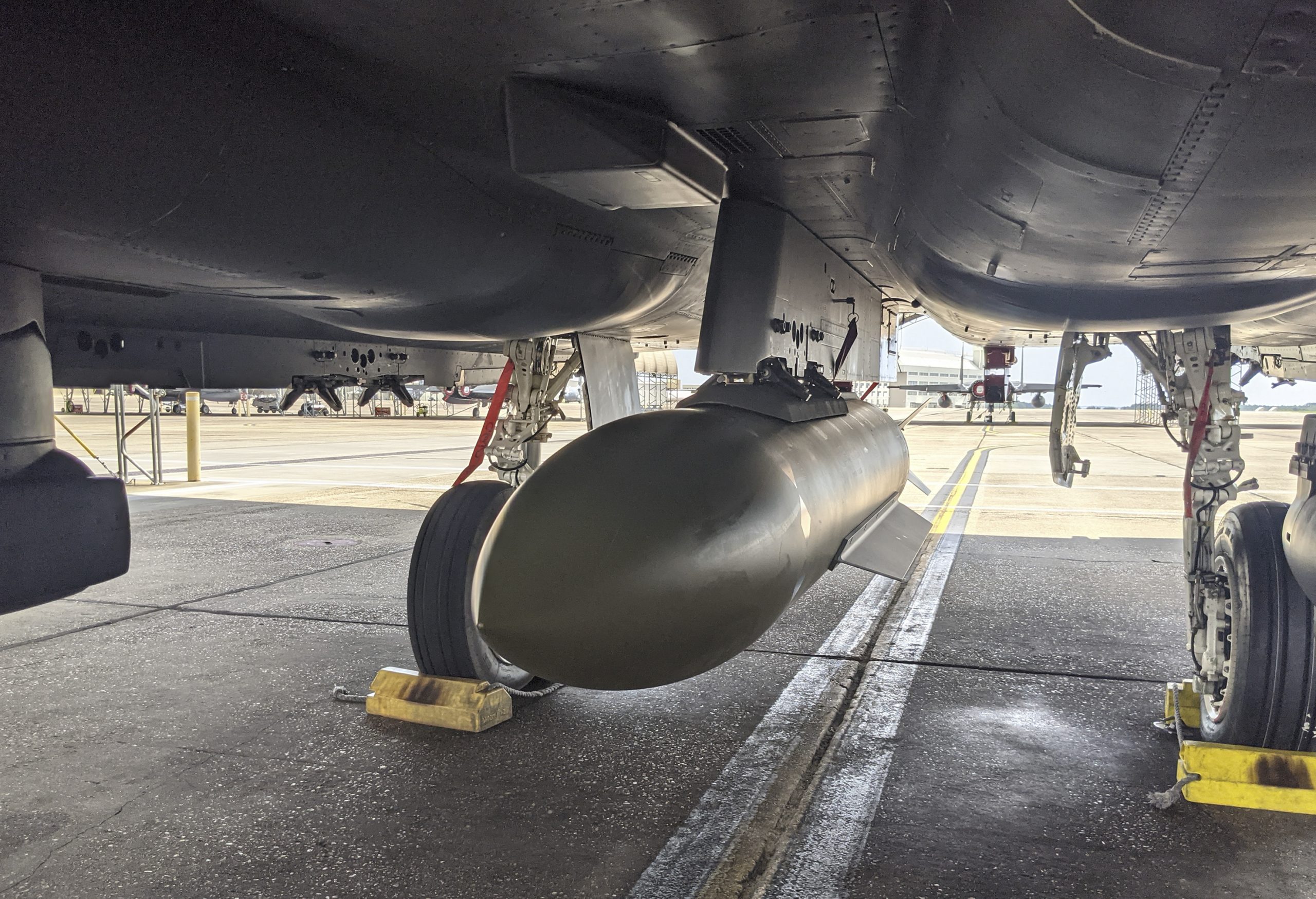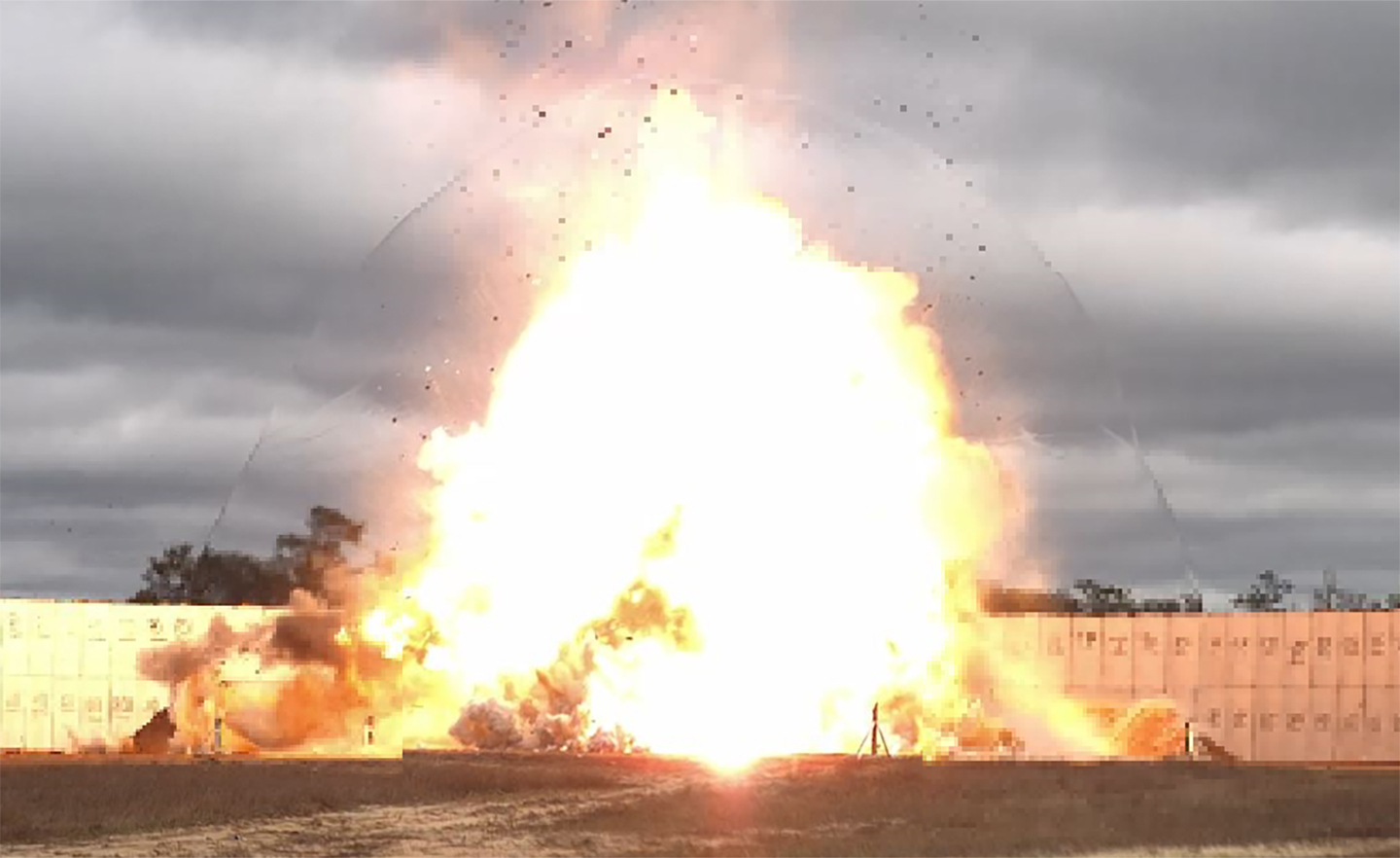The US Air Force has successfully completed trials of a new, powerful bunker-buster bomb, which is aimed at overcoming and destroying hardened targets buried deep under the surface, beyond the range of most conventional munitions.
As India Opens Up Space, How ISRO Could Help Indian Air Force Become An Aerospace Superpower
Various tests took place, including an aerial one from 96th Test Wing’s F-15E Strike Eagle combat aircraft which dropped the 5000-lb GBU-72/B at the Eglin Air Force base range in Florida. The development and testing of the new bomb were carried out secretly under the Advanced 5000 Pound Penetrator or Advanced 5,000 Pound Warhead program aka A5K.
The bomb was tested earlier this year but the results were announced by USAF on October 12. In a series of ground tests preceding the flight test, the bomb’s warhead was detonated inside barriers to gather data on the penetration capability and other effects.
According to the 96th Test Wing, this was the largest explosive test ever carried out at Eglin airbase.
A Deadly Bomb
The GBU-72/B looks like the GBU-31/B JDAM (joint direct attack munition) precision-guided bomb which carries a bunker-busting warhead like the BLU-109/B or the more advanced BLU-137/B.
GBU-72/B carries an inertial navigation system supported by GPS in its tail section, which is a modified variant of GBU-31/B’s tail unit.
The major visible difference between the two bombs is that the newer one has a pair of long fins on each side at the bottom while on the GBU-31/B, they are attached to the center. The development of the bomb involved substantial use of simulation and modeling to test its lethality.

“This helps us bring our operational test partners in sooner with eyes-on, hands-on participation, validating our design and procedures sooner while including input that improves the weapon,” James Culliton, GBU-72 Program Manager, said in a statement.
In an official press release, the USAF said, “The GBU-72 was developed to overcome hardened deeply buried target challenges and designed for both fighter and bomber aircraft. Lethality is expected to be substantially higher compared to similar legacy weapons like the GBU-28.”
Combat History
The GBU-28 was hurriedly developed during the 1991 Gulf War to be used against Iraqi command and control bunkers located deep underground after concerns that BLU-109/B, the buster-busting bomb in service at that time, could not reach these targets.
Only two GBU-28s were delivered to the theater and used against their intended targets by F-111 strike aircraft. The body of GBU-28/B is made out of the barrel of a 203mm artillery gun and it carries a high-explosive charge of 630 lb. Basically, the bomb is a large metal mass that uses kinetic energy as it falls from the aircraft to give it penetration into the target area.

It can go as deep as up to 150 feet underground or smash through 15 feet of reinforced concrete before exploding.
What material the rest of the warhead is composed of is a closely guarded secret but there is a possibility of it being made up of depleted uranium, which would give it very impressive penetration qualities.
Around 100 units of this bomb were exported to Israel in 2005-06 and also to South Korea. After the Gulf War, USAF used GBU-28/B in the 1999 war in Serbia and then during the wars in Afghanistan in 2001 and Iraq in 2003.
Massive Ordnance Penetrator
Now with an improved BLU-122/B warhead, the GBU-28/U sits between the GBU-31/B and the GBU-57/B, a 30,000 lb beast officially known as Massive Ordnance Penetrator (MOP), which can only be carried by the B-2 stealth bomber.
USAF has nuclear gravity bombs like B61-11 and B83-1 that do not have precision-guidance kits. They have bunker-busting capabilities but can’t be used routinely like the GBU-28/B, GBU-31/B, and the GBU-57/B.
The GBU-72/B gives the air force added flexibility of using it against targets that are too strong for GBU-31/B bombs but do not need the usage of the GBU-57/B.

Over the years, hostile nations like Iran, North Korea and even terror outfits have increased the number of critical facilities which are buried deep underground to escape destruction, and as a result, USAF has tailored the GBU-72/B to destroy these targets if war breaks out.
The advantage the GBU-72/B has over the laser-guided GBU-28/B is that it uses a combination of GPS and INS which unlike laser is not affected by weather, dense cloud cover, dust storm, smoke etc.
With its better range, the GBU-72/B also allows the launch platform to stay further away from the target during the release of the weapon making it more survivable.
Because of their delayed blast effects, which prevents collateral damage to nearby structures and people in them, USAF has used bunker busters rather than conventional bombs in operations against ISIS in Iraq to take out above-ground buildings and tunnel networks.
USAF says they would continue development and testing of the GBU-72/B well into 2022 and once it is ready to be deployed, it is likely that allies like Israel, South Korea, and Saudi Arabia among others would also be interested in buying this latest bunker-busting munition.
- Ramandeep Singh Bajwa is a senior defense journalist who has worked in both online and print media. He keenly follows the defense domain and has a special interest in combat aircraft. He can be reached at: bajwa.rs@gmail.com
- Follow EurAsian Times on Google News





